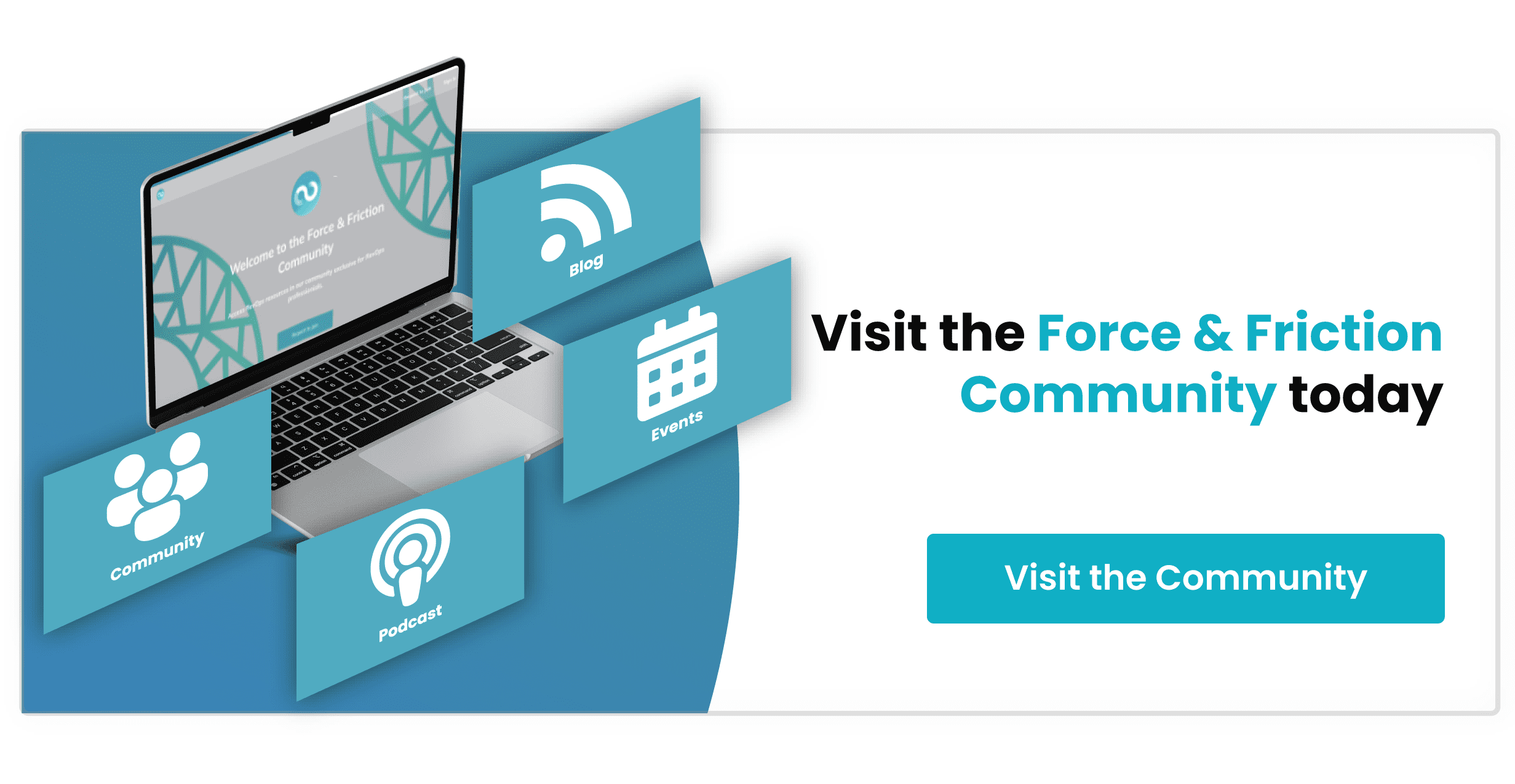
The Power of Cross-Functional Teams in Scaling Your Business Using RevOps | #RevOpsLife
We all know people are our greatest assets, or in truth can be disruptive and our biggest liability…
If you as a business are seeking to scale up your operations, I always advise leadership teams about the importance of establishing cross-functional teams to ensure that everyone is working in sync towards a common goal.
Revenue Operations (RevOps), absolutely needs this as a core fundamental, especially as our goal is to combine the efforts of sales, marketing, and customer success teams to drive revenue growth.
The benefits of establishing cross-functional teams allow for collaboration and communication between different departments, which leads to a more streamlined approach to achieving the company's objectives.
By bringing together employees from different backgrounds, perspectives, and skill sets, businesses can tap into a wealth of knowledge and expertise that can help them make more informed decisions and achieve better outcomes. Often I see people not related to a specific discipline bring immense value through objective outside views.
In the context of RevOps, cross-functional teams are essential for achieving revenue growth. Period!
Avoid the Silo and Blame Culture
Sales, marketing, and customer success teams are usually siloed within organizations, with each department operating independently and working towards its own goals.
It is not uncommon for obstruction and blames culture to be evident, like
-
Marketing blames sales for not closing deals,
-
Sales blames marketing for providing poor quality leads, and
-
Customer success has to fight fires from miscommunication, over-ambitious marketing messages or poorly qualified sales processes that mean what the clients are expecting can be short of their expectations or value they believe they have purchased.
A real house of problems if you do not get it right.
The Benefits of Cross-Functional Teams
However, by bringing these teams together, companies can create a more holistic approach to revenue growth.
For example, think about your:
-
Sales teams - who might be focused on closing deals and generating revenue,
-
Marketing teams - who are focused on lead generation and creating awareness.
-
Customer success teams, on the other hand, are focused on ensuring that customers are satisfied and continue to use the company's products or services.
By bringing these teams together, you can create a more cohesive approach that takes into account all of these factors.
If you need the inspiration to get started and get your teams collaborating, here are some examples of how establishing cross-functional teams can help your business achieve its goals:
1: Launching a New Product:
A cross-functional team that includes members from product development, marketing, sales, and customer success can work together to bring a new product to market. The team can ensure that the product is designed to meet customer needs, that the marketing strategy effectively reaches target audiences, and that the sales team has the tools (sales enablement) and information they need to close deals.
2: Improving Customer Retention:
A cross-functional team that includes members from customer success, marketing, and product development can work together to improve customer retention rates. By analyzing customer feedback, the team can identify areas for improvement in the product or service offering and develop marketing campaigns that address customer pain points. This can help to improve customer satisfaction and loyalty.
3: Optimizing the Sales Process:
A cross-functional team that includes members from sales, marketing, and product development can work together to optimize the sales process. By analyzing customer behaviour and feedback, the team can identify areas where the sales process can be streamlined and made more effective. This can help to improve sales conversion rates and revenue growth.
4: Expanding into New Markets:
A cross-functional team that includes members from sales, marketing, and business development can work together to expand into new markets. The team can analyze market data to identify opportunities and develop strategies for entering new markets. This can help to increase the company's revenue and customer base.
5: Improving Operational Efficiency:
A cross-functional team that includes members from operations, finance, and IT can work together to improve operational efficiency. By identifying areas where processes can be automated or streamlined, the team can reduce costs and improve productivity. This can help the company to achieve its goals more efficiently and effectively.
Which one of these would help you move forward, unite your teams and deliver positive results? Let me know your thoughts in the comments section.
Some Recommendations for your to Consider:
Here are some recommendations for ensuring that your Cross-functional teams can contribute positively to the wider business goals you have set.
Encourage Data-Driven Decision-Making:
Encouraging a data-driven approach to decision-making is crucial for businesses seeking to make informed decisions and achieve better outcomes, by basing their decisions on objective information and insights, Including:
-
Providing access to data analytics tools that employees can use to analyze data.
-
Hire data analysts to help interpret data and provide insights.
-
Create data dashboards that show key metrics and are updated in real-time.
-
Offer training and support to employees to help them understand how to use data effectively.
-
Develop a culture where data is valued and respected, and employees are recognized and rewarded for using data to drive results.
Establish Cross-Functional Teams:
I cannot stress the importance of you establishing cross-functional teams, it is a crucial component of successful business operations, enabling companies to tap into the expertise of employees from different departments and work collaboratively towards a common goal, Including:
-
Identify your key stakeholders from different departments who can contribute to achieving a specific goal or objective.
-
Set clear objectives and expectations for the cross-functional team, including timelines and deliverables.
-
Develop a communication plan that outlines how the team will communicate and collaborate on the project.
-
Provide resources and support to help the team achieve its objectives.
-
Recognize and reward team members for their contributions.
Create a Culture of Collaboration:
Committing to building a culture of collaboration is essential for businesses looking to drive innovation, improve efficiency and achieve your objectives through the collective efforts of your employees, Including:
-
Encourage employees to share ideas and feedback across departments and teams.
-
Develop processes and tools that facilitate collaboration and communication, such as project management software or regular team meetings.
-
Create opportunities for employees to work on cross-functional projects or teams.
-
Provide training and support to help employees develop the skills they need to work effectively in a collaborative environment.
-
Recognize and reward employees for their contributions to collaborative projects.
Provide Strong Leadership:
You absolutely have to provide strong leadership, it is essential for your organization when it is looking to drive growth and achieve its goals, you have to inspire and motivate your employees, setting them clear direction, and fostering a culture of excellence, Including:
-
Set a clear vision and mission for the organization that inspires and motivates employees.
-
Communicate regularly with employees to ensure they are aligned with the organization's goals and objectives.
-
Provide feedback and support to employees to help them develop their personal skills and achieve their own objectives.
-
Lead by example by demonstrating the behaviours and values that you expect from employees.
-
Recognize and reward employees for their positive contributions to the organization.
Emphasize Customer-Centricity:
Emphasizing customer-centricity is vital if you are looking to drive growth and build a loyal customer base, by delivering exceptional customer experiences and creating products and services that meet your customer's needs and preferences, Including:
-
Develop a deep understanding of customer needs and preferences through market research, customer feedback, and data analysis.
-
Use this information to develop products and services that meet customer needs and expectations.
-
Involve customers in the product development process by soliciting feedback and conducting user testing.
-
Create customer-centric processes and policies that prioritize the customer experience.
-
Train and support employees to provide excellent customer service and support.
Here Are Some Common Mistakes to Avoid and Solutions To Get Ahead:
Encourage Data-Driven Decision-Making:
-
Mistake: Focusing solely on the data without considering the context or qualitative factors.
-
Solution: Use data as a tool to inform decisions, but also consider qualitative information and context.
Establish Cross-Functional Teams:
-
Mistake: Not providing clear objectives, timelines, and deliverables for the cross-functional team.
-
Solution: Clearly communicate the objectives, timelines, and deliverables for the project you are expecting, and provide support and resources to help your team achieve its goals.
Create a Culture of Collaboration:
-
Mistake: Not valuing diverse perspectives or ideas from your employees.
-
Solution: Encourage your employees to share ideas and feedback, and create processes and tools that facilitate collaboration and communication.
Provide Strong Leadership:
-
Mistake: Failing to communicate regularly with your employees or provide feedback and support to help them achieve their own objectives.
-
Solution: Ensure you set a clear vision and mission for the organization, communicate regularly with your employees, and provide feedback and support to help them develop their skills and achieve their goals.
Emphasize Customer-Centricity:
-
Mistake: Focusing solely on the short-term needs of customers and not considering their long-term needs and preferences.
-
Solution: Develop a deep understanding of your customer needs and preferences, involve customers in the product development process, and create customer-centric processes and policies that prioritize the customer experience.
By avoiding these common mistakes and adopting the solutions, as a business leader, you can achieve better outcomes and drive sustainable growth over the long term while creating a more collaborative, data-driven, and customer-centric culture.
In conclusion, establishing cross-functional teams is essential for your businesses if you are serious about scaling up using RevOps.
By bringing together employees from different departments and encouraging data-driven decision-making, you can create a more holistic approach to achieving your revenue growth.
With these elements in place, you can achieve your objectives and drive sustainable revenue growth over the long term.
#CrossFunctionalTeams #Collaboration #Teamwork #Synergy #RevOpsLife #RevenueOperations #ScaleUp







%20-%20Teal.png?width=500&height=130&name=Force%20%26%20Friction%20-%20Branding%20-%20Logo%20(White)%20-%20Teal.png)